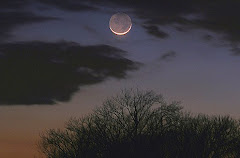As part of this Summer’s creative/spiritual retreat, I made a pilgrimage to the largest Buddhist temple in the world. BoroBudur is an epically-proportioned, three-dimensional tantric mandala, which was constructed sometime between 700 and 800 A.D., with about 55,000 cubic meters of stone. To make the full trip around and up each of the temple’s 9 platforms to the giant stupa in the center is about a 3 km hike, and for much of it, the visitor can experience thousands of detailed ancient carved reliefs, stupas, and statues that line the walls.
I experienced moments of walking meditation stillness, while on this journey. The feeling sporadically resembled the experience of the labyrinth walk. But the intense heat, busy atmosphere from the thousands of other visitors and the visual beauty of my novel surroundings prevented me from drifting into much of a meditative state.
It was also somewhat of a challenge to get to the temple, with hoards of street vendors descending on any tourist in sight. And who can blame them?
BoroBudur is a UNESCO world heritage site and Wonder of the World, and we traveled there on the Buddhist religion’s holiest of days, Waisak—the full moon in May or June. This is an annual Holiday to celebrate the birthday of Gautama Buddha, so there were many saffron robed Buddhist monks on site, as well as other visitors from around the world.
Mandala-the Genesis of Realization
“Mandalas are commonly used by tantric Buddhists as an aid to meditation. More specifically, a Buddhist mandala is envisaged as a "sacred space," a "Pure Buddha Realm,” and also as an abode of fully realised beings or deities.” --Wikipedia
Because of Borobudur, when I now think of a pilgrimage, I consider it as a parallel to the experience of how an idea goes through the different stages of development until it transforms and becomes a creation. As a person makes progress in a grand and spiritually charged environment through forward motion, somehow it makes it possible to bring total attention to the necessary aspects of our lives which need forward motion; to make steps toward fertilizing a dream.
We had been instructed to set an intention when we got to a certain sculpture in the center (the Black Buddha), but now I understand the importance of keeping that intention in mind and alive while journeying through the Mandala’s layers and platforms. I believe this mindful approach can provide an added dimension to the process of engaging in any kind of pilgrimage anywhere, holy or otherwise.
Mendut Meditation
While, I enjoyed the visual beauty of BoroBudur, I would have to wait until dusk, to experience the most memorable and piercing aspect of the trip. This came in the form of a powerful sitting meditation at the nearby Mendut temple. The shrine inside the temple contained a magnificent three meter tall stone Buddha, flanked by Boddhisatvas on either side of him. Flowers, incense sticks, and other offerings adorned the alter in front of the statues.
At every hour on Vaisak, a different contingency of monks would arrive at the temple and pay homage by leading a chant or prayer in honor of their spiritual teacher and prophet.
While it had a tall spiral ceiling, the shrine was a tiny space relative to other places of worship I had visited, and its compactness created a much more intimate setting for myself and the four others in my group who had received special passes to attend the meditations. It was a stark contrast to the heat and vast open spaces at Borobudur and it did not take long to slip into what Arnold Mindell would call the "Second Attention," or the altered state.
The chants were delivered and amplified with such intensity and devotion that it was hard not to be entranced by the worshippers’ voices. But the chants in combination with the ancient temple’s bright colors and visual majesty, the intoxicating aroma of flowers and incense, and the mental image created by the Buddha, made it difficult not to be completely enthralled by the experience.
It was one of those rare and rich spiritually synesthetic moments, when multiple senses feel stimulated at the same time. Except, as a meditator I felt like I had to try and disengage from them all. Of course, I failed miserably and gave up on that task. Instead, I intended to open my heart to the feeling, my Third Eye to the unseen imagery, and my body to the presence of Spirit.
Special thanks to Carrie-Ann and my Alex Grey Retreat friends for capturing such beautiful images of BoroBodur and Mendut.


















No comments:
Post a Comment